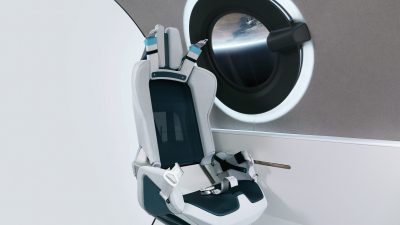Space industry seeks continued progress on regulatory reform

WASHINGTON — The commercial space industry hopes to continue recent progress in regulatory reform even if there is a new president or a change in party control in Congress after the election.
The last six months have seen two major milestones in government regulation of commercial space activities: the publication of revised commercial remote sensing regulations in May and streamlined launch and licensing rules Oct. 15.
Both sets of regulations were long awaited by much of the commercial space industry, who complained that existing rules added cost and complexity to their activities, or even uncertainty that they would be licensed by the government at all. That was particularly the case in the commercial remote sensing industry, where companies said that getting licenses for some new capabilities was difficult, putting U.S. companies at a disadvantage to competitors in other countries.
Since the publication of the new commercial remote sensing rules, NOAA’s Commercial Remote Sensing Regulatory Affairs (CRSRA) office has shifted existing licenses to the new rules, which have a three-tier approach to oversight depending on how the licensed system’s performance compares to what is available globally.
Most of the licenses have been assigned to Tier 1, with the fewest conditions, said Tahara Dawkins, director of CRSRA, at an Oct. 28 meeting of the Advisory Committee for Commercial Remote Sensing. Processing time for license applications has also dropped, she said, from an average of 65 days in 2019 to 43 days in 2020.
The commercial launch industry is still studying the revised launch regulations. While the document that contained the final rule was 785 pages long, Wayne Monteith, FAA associate administrator for commercial space transportation, said most of that document was a preface discussing how the FAA handled the comments it received on a draft rule. The new regulations are 85% shorter than the existing ones it is replacing, he noted in a panel at the American Astronautical Society’s Wernher von Braun Memorial Symposium Oct. 27.
Companies, though, are still taking their time to review the new regulations. “We need to continue to work with Wayne’s team on the launch and reentry streamlining,” said Eric Stallmer, outgoing president of the Commercial Spaceflight Federation, on that panel. That includes a workshop the FAA will hold Nov. 4–6 where the agency will go through what Monteith called the “nuts and bolts” of the new regulations and how companies can transition from existing regulations to the new ones.
Stallmer, who is leaving the Commercial Spaceflight Federation at the end of October to become an executive vice president at Voyager Space Holdings, outlined other priorities for regulatory reform, both at the FAA and elsewhere in the government. One example he gave was the need for “some updating” of FAA regulations involving spaceports and liability regulations.
Another priority, he said, is developing a “voluntary Article 6 solution” with the Department of Commerce. That’s a reference to a provision in the Outer Space Treaty that requires governments to provide “authorization and continuing supervision” of space activities performed by its nationals. While that is handled by various agencies for commercial launch, remote sensing and communications, it’s less clear what agency is responsible for emerging space activities.
One example of that is satellite servicing. SpaceLogistics, the Northrop Grumman subsidiary that operates the Mission Extension Vehicles developed by the company to extend the life of commercial satellites, discovered that regulatory gap when it sought government approval for its missions. “There was no established regime for satellite servicing missions,” said Joe Anderson, vice president of SpaceLogistics, at the Global Satellite Servicing Forum by the industry group CONFERS Oct. 28.
SpaceLogistics eventually worked out a solution where the FCC would take that Article 6 responsibility, while also getting a NOAA commercial remote sensing license for the camera system on the vehicle. However, a more consolidated licensing regime would be useful, he said. “It would be helpful for U.S. operators to have a single entity to go to for all licensing needs, especially as the spectrum of commercial in space activities expands.”
Stallmer said at the symposium that he hopes that if there is a new administration or change in party control of Congress, they will not seek to roll back changes. He cited in particular the Commercial Space Launch Competitiveness Act of 2015. “If there is a new administration, a new Congress,” he said, “we need to fight off any fundamental changes to that.”
It’s unclear what changes, if any, would come to space regulatory issues should Joe Biden, the Democratic Party nominee, win the presidential election. The Biden campaign has said little about space during the campaign, and the brief discussion of space in the Democratic party platform does not touch upon regulatory issues.
Mary Lynne Dittmar, president and chief executive of the Coalition for Deep Space Exploration, said new regulations will likely need to be tweaked simply based on the experience of companies and agencies working with them. “There really needs to be a feedback loop, because we’ll learn from doing implementation,” she said. “It’s critical that business continues to engage with Congress, regulatory agencies and the trade associations.”
“There’s no regulatory framework that’s perfect,” she added.

The commercial launch industry is still reviewing revised regulations released by the FAA in mid-October, but some say there will be the need for updates to other parts of FAA commercial space regulations. Credit: SpaceX
Source: SpaceNews






